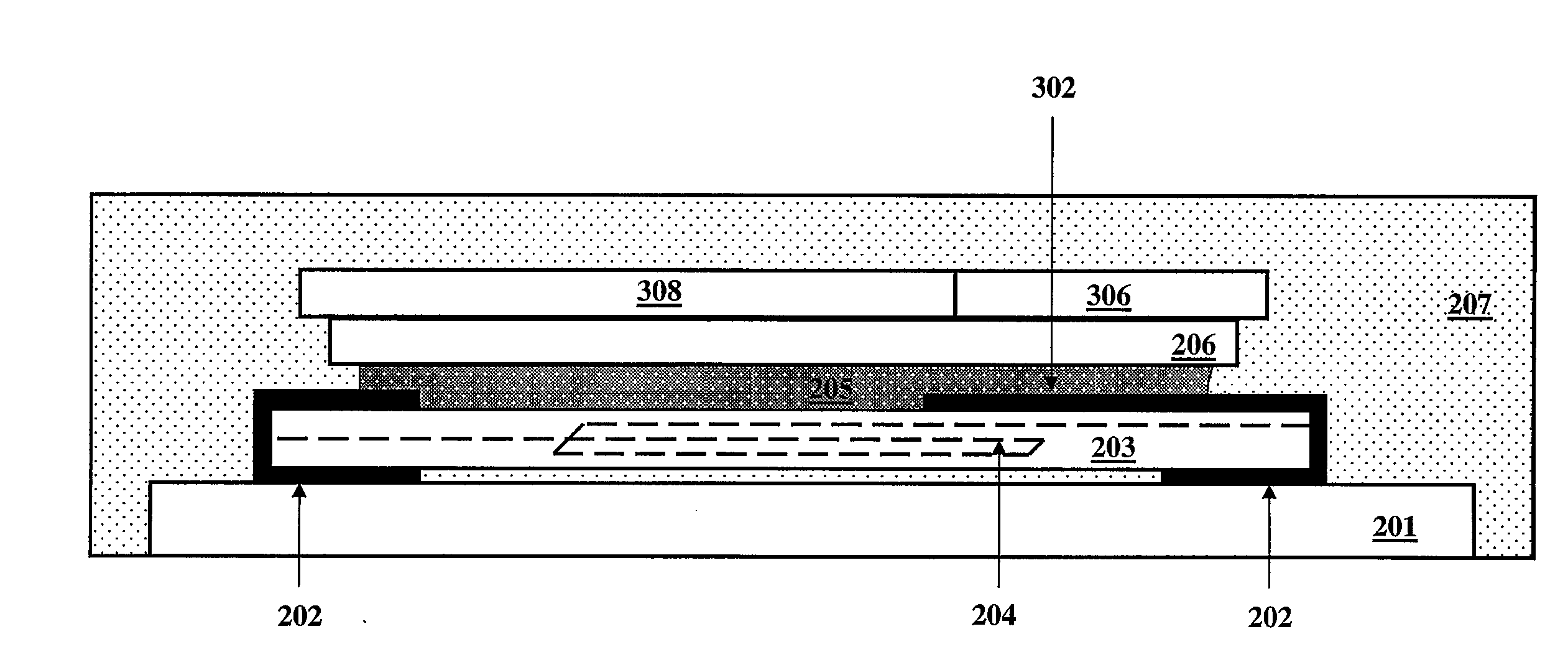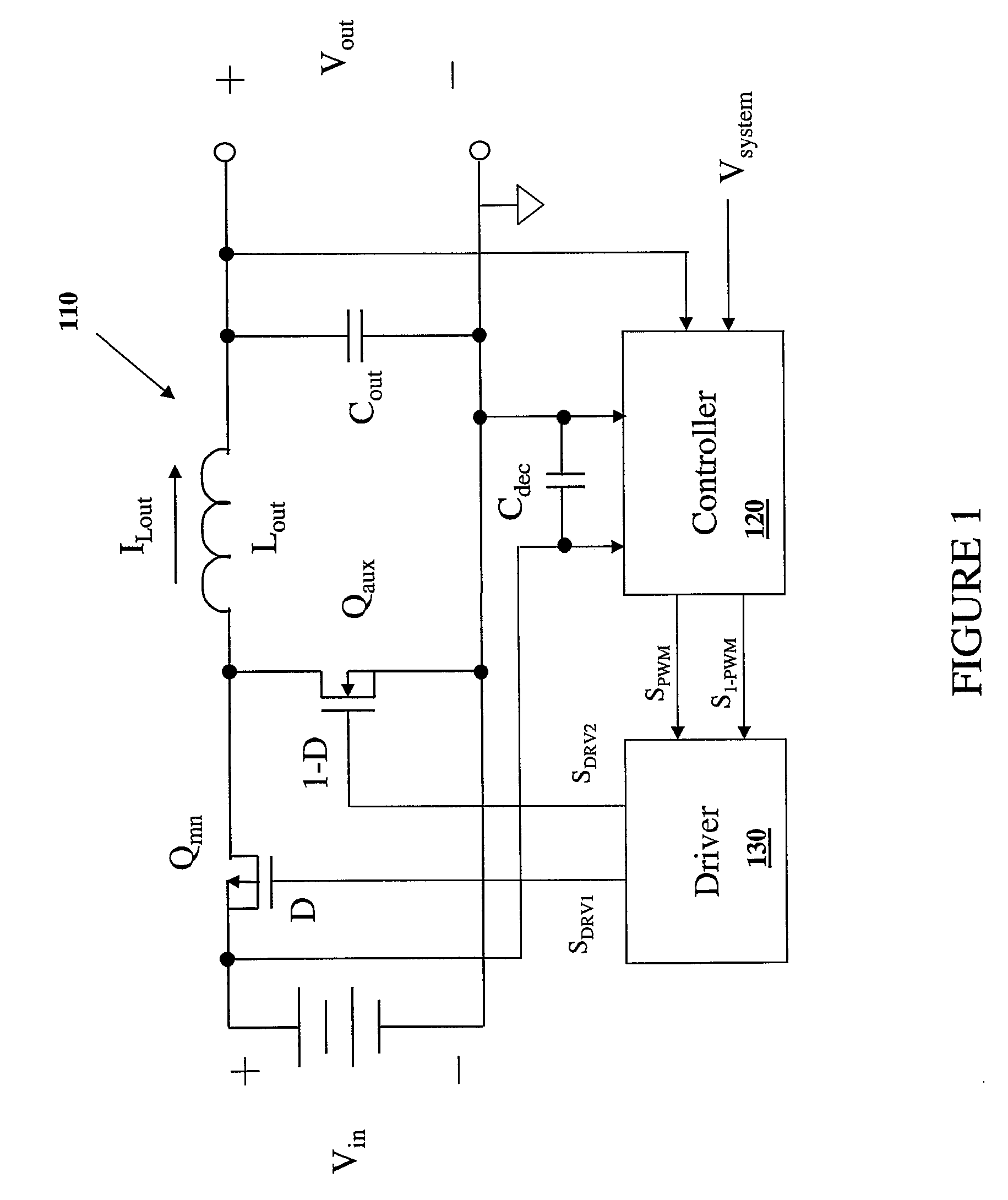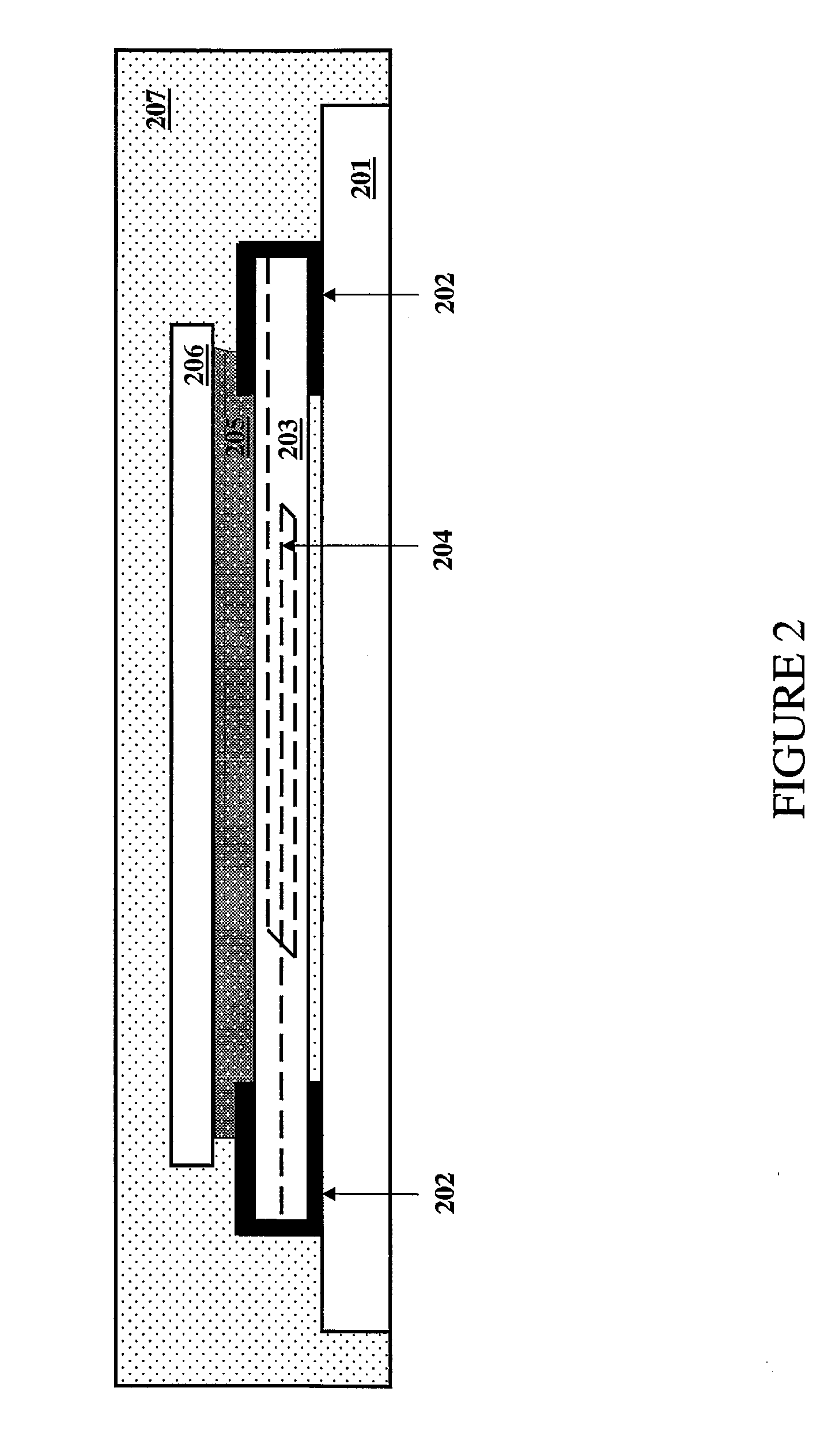Module having a stacked passive element and method of forming the same
a passive element and module technology, applied in the direction of basic electric elements, transformers/reacts mounting/support/suspension, transformers/inductance details, etc., can solve the problems of inability to meet the requirements of the design and manufacturing approach, and the device also provides inadequate heat dissipation capability or reduce the size of the power modul
- Summary
- Abstract
- Description
- Claims
- Application Information
AI Technical Summary
Benefits of technology
Problems solved by technology
Method used
Image
Examples
Embodiment Construction
[0017]The making and using of the presently preferred embodiments are discussed in detail below. It should be appreciated, however, that the present invention provides many applicable inventive concepts that can be embodied in a wide variety of specific contexts. The specific embodiments discussed are merely illustrative of specific ways to make and use the invention, and do not limit the scope of the invention.
[0018]The present invention will be described with respect to preferred embodiments in a specific context, namely, a power module (e.g., an electronic device) including a discrete or separate passive element and a semiconductor device, and a method of manufacture therefor. While the principles of the present invention will be described in the environment of a power module, any application that may benefit from a semiconductor device mounted on a discrete passive element as described herein is well within the broad scope of the present invention.
[0019]As will become more appar...
PUM
 Login to View More
Login to View More Abstract
Description
Claims
Application Information
 Login to View More
Login to View More - R&D
- Intellectual Property
- Life Sciences
- Materials
- Tech Scout
- Unparalleled Data Quality
- Higher Quality Content
- 60% Fewer Hallucinations
Browse by: Latest US Patents, China's latest patents, Technical Efficacy Thesaurus, Application Domain, Technology Topic, Popular Technical Reports.
© 2025 PatSnap. All rights reserved.Legal|Privacy policy|Modern Slavery Act Transparency Statement|Sitemap|About US| Contact US: help@patsnap.com



